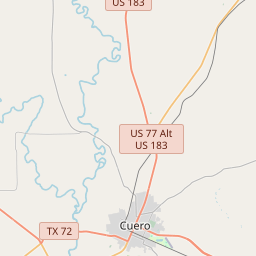Morgan Steamship Line
Historical marker location:






First mail and passenger steamship service from the United States to Texas. In 1835 put in operation the "Columbia" from New Orleans to Galveston, bringing in settlers and goods; soon had three cargo and mail lines along the Texas coast and to Mexico.
In 1850 based fleet at Indianola, to handle corn, cotton, sugar, beef. Brought in U.S. Army supplies for western forts. Carried to U.S. mints loads of gold and silver coming overland to the Gulf from the mines in northern Mexico.
Morgan ships were seized in 1861 for Civil War duty -- some by the U.S., some by the Confederacy. In 1866 Charles Morgan (1795-1878) resumed operations.
In 1869 Morgan branched into rail transportation -- built (1873) Gulf, Western Texas and Pacific Railroad to Cuero; bought other railroads. Soon captains of the Morgan line became residents and business and civic leaders here and in other Texas towns.
The Houston Ship Channel was built by Morgan in 1875 and controlled by affiliates for many years.
The Morgan line was sold, 1883, to Southern Pacific Railroad, but continued to operate under old name. Last of the ships were sold to the U.S. Government in 1941 for military use during World War II
As one of the most visible programs of the Texas Historical Commission (THC), historical markers commemorate diverse topics in Texas history, including: the history and architecture of houses, commercial and public buildings, religious congregations, and military sites; events that changed the course of local and state history; and individuals who have made lasting contributions to the state, community organizations, and businesses.
The Texas Rangers, a famous law enforcement agency, were first organized in 1835 to protect settlers from Native American attacks.
In 1827, the area that is now DeWitt County was incorporated into the Mexican state of Coahuila y Tejas. Shortly after, American settlement began in the region, with empresarios such as Green DeWitt and Martín de León playing significant roles. DeWitt, for whom the county is named, received a land grant in 1825 and played a vital part in bringing Anglo-American colonizers to the area.
DeWitt County saw significant growth during the Texas Revolution in the 1830s. The Battle of Gonzales, the first engagement of the revolution, occurred just outside the county's boundaries. The county itself became a site of conflict during the revolution, with the Battle of Ethel's Woods and the Battle of Gonzales River Bridge taking place within its borders.
After Texas gained independence from Mexico, DeWitt County was officially established in 1846. The county seat was initially Gonzales, but it was moved to Cuero in 1876. Throughout the late 19th and early 20th centuries, DeWitt County experienced economic growth due to industries such as ranching, oil, and agriculture.
Present-day DeWitt County continues to thrive as a center for agriculture, oil and gas production, and tourism. The county is known for its rich historical sites, including the Gonzales Memorial Museum, which houses artifacts from the Texas Revolution, and numerous ranches that showcase the area's strong cattle industry. DeWitt County's history is a testament to the resilience and determination of its early settlers and remains an essential part of Texas's broader historical narrative.
DeWitt County Timeline
This timeline provides a concise overview of the key events in the history of DeWitt County, Texas.
- 1827: DeWitt County is established as a part of DeWitt's Colony in Mexican Texas.
- 1840: The Battle of Plum Creek takes place in DeWitt County during the Texan Revolution.
- 1846: DeWitt County becomes a part of the newly formed Republic of Texas.
- 1848: Texas becomes a state of the United States, and DeWitt County remains a part of it.
- 1850: Population growth leads to the establishment of the county seat, Cuero.
- 1870: The Gulf, Western Texas and Pacific Railway reaches Cuero, increasing trade and transportation opportunities.
- 1874: Cuero is officially incorporated as a city.
- 1893: Oil is discovered in DeWitt County, leading to economic growth and development.
- 1923: A disastrous fire destroys much of downtown Cuero.
- 1941-1945: DeWitt County contributes to the war effort during World War II.
- 1960s-1970s: DeWitt County experiences a decline in population and economic activity.
- 1990s-present: DeWitt County experiences a resurgence in oil and gas production, leading to economic growth.